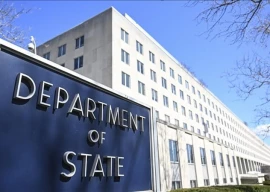
On the 5th anniversary of ‘Operation Swift Retort,’ Pakistan commemorated the valour of its Armed Forces for thwarting Indian aggression. Pakistan’s measured response during the operation starkly contrasted with India’s strategic recklessness, highlighting the latter’s penchant for instability. Despite India’s ill-conceived air strike in Balakot and claims of calling Pakistan’s nuclear bluff, Pakistan’s strategic restraint averted a crisis.
Today, five years post-Pulwama and Balakot, it’s crucial to address India’s misconceptions about Pakistan’s nuclear capabilities. Pakistan’s Full Spectrum Deterrence, designed to address the gap exploited by the Indian Cold Start Doctrine, which aims to enable India’s conventional forces to conduct holding attacks to prevent nuclear retaliation from Pakistan in case of conflict, garners international attention, thereby preventing further escalation.
India’s decision not to escalate post-February reflects recognition of the real nuclear threat, validating Pakistan’s deterrence strategy over India’s bluff claims. Nuclear India should have realised that in a conflict scenario with nuclear-armed Pakistan, while initiating escalation might seem feasible, Pakistan holds the advantage at the next escalation level.
India’s status as a nuclear power heavily shapes the region’s security framework. India’s regional dominance ambitions prompt Pakistan to maintain a delicate balance of power for its security. However, India’s aspiration to serve as a net security provider in the Indian Ocean region has not promoted conflict resolution but rather fueled a destabilising arms race in South Asia.
Therefore, in contrast to India’s No First Use policy, Pakistan has deliberately kept its stance ambiguous regarding a nuclear first strike. The evolution of Pakistan’s strategy from ‘minimum credible deterrence’ to full-spectrum deterrence underscores its commitment to deterring all forms of Indian aggression This strategy includes the option of a first strike, known as ‘Quid Pro Quo Plus’ (QPQP), which integrates nuclear deterrence with conventional capabilities.
In response to India’s limited war doctrines, Pakistan has developed a diverse array of ballistic missiles, including the tactical missile ‘Nasr’, to dissuade India from initiating low-intensity conflicts and prevent escalation to massive retaliation. Additionally, the deployment of Multiple Independent Re-entry Vehicles (MIRVs), alongside land, air and sea-launched cruise missiles, and a naval-based second-strike capability, reinforces Pakistan’s comprehensive defence strategy, ensuring stability amidst evolving security dynamics in South Asia since 2019.
The prospect of a limited war in South Asia, nonetheless, poses a significant risk of escalating into a full-scale conflict. Therefore, prioritising stability and maintaining credible deterrence at the lower threshold is vital to preserving peace and stability in the region.
The purported Balakot strike revealed India’s poor planning and execution. This move, driven by delusions of Israeli-style air power tactics against Syria, Gaza and Lebanon, disregarded the realities of the air operational environment in Pakistan. It dangerously toyed with the lower end of the nuclear spectrum, risking catastrophic consequences at the upper end. Pakistan’s QPQP strategy against a limited Indian attack left India surprised by the measured and successful response.
Today, there’s a looming possibility that Modi, in the run-up to the coming elections, might resort to a false-flag operation to restore the IAF’s reputation. Ex-IIOJK governor Satya Pal Malik’s warning about another Pulwama-like incident, as the 2024 election campaign unfolds, adds weight to this concern. His apprehension underscores the hawkish capability of Indian leadership to orchestrate destabilising events, urging vigilance against potential escalations and nuclear risks in the region. Despite economic constraints, Pakistan is compelled to enhance its armed forces’ conventional and nuclear capabilities.
Published in The Express Tribune, March 30th, 2024.
Like Opinion & Editorial on Facebook, follow @ETOpEd on Twitter to receive all updates on all our daily pieces.





1726222798-0/Tribune-Pic-(13)1726222798-0-165x106.webp)














COMMENTS
Comments are moderated and generally will be posted if they are on-topic and not abusive.
For more information, please see our Comments FAQ